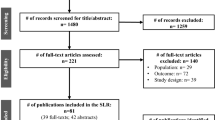Abstract
Background
Recent research has demonstrated discrepancies in care post-ST-elevation myocardial infarction (STEMI), showing that women often have delays in time to percutaneous coronary intervention (PCI) and are less often prescribed evidence-based medications for secondary prevention. This single-centre study evaluated gender differences in management and local prescribing patterns of STEMI patients on discharge consistent with implicit bias, benchmarked against Australian clinical guidelines.
Method and Result
A retrospective, consecutive study of 318 patients admitted with a STEMI was conducted at a large tertiary hospital from January 2018 until October 2019. Data was collected from medical records including patient demographics, door-to-balloon (DTB) time, and pharmacological management. The mean age of women with a STEMI was higher (67.90 years in women; 64.17 in men, p = 0.013). DTB times were unaffected by gender with 88% of both men and women receiving PCI in less than 90 min (1.04 95% CI (0.44-2.46). Women were less likely to be prescribed an angiotensin-converting enzyme (ACE)-inhibitor/angiotensin receptor blocker (ARB) on discharge (p = 0.003). However, all other medications prescribed were appropriate between genders based on recommended guidelines.
Conclusions
Our study identified excellent adherence with recommended guidelines, challenging recent data both internationally and from the Victorian Cardiac Outcomes Registry (VCOR). Pharmacological and revascularisation management post-STEMI for both male and female patients was equal, suggesting implicit bias is not universal and may be institutional. Health services should evaluate their practices to identify sources of implicit bias, which may influence their management of women presenting with a STEMI.
Similar content being viewed by others
Data Availability
The data that support the findings of this study are available from the corresponding author upon reasonable request.
References
http://www.who.int/topics/noncommunicable_diseases/en/. Accessed on 22 February 2020.
Radovanovic D, Erne P, Urban P et al (2007) Gender differences in management and outcomes in patients with acute coronary syndromes: results on 20 290 patients from the AMIS Plus Registry. Heart 93(11):1369–1375
Akhter N, Milford-Beland S, Roe MT et al (2009) Gender differences among patients with acute coronary syndromes undergoing percutaneous coronary intervention in the American College of Cardiology-National Cardiovascular Data Registry (ACC-NCDR). Am Heart J 157(1):141–148
Leurent G, Garlantézec R, Auffret V et al (2014) Gender differences in presentation, management and inhospital outcome in patients with ST-segment elevation myocardial infarction: data from 5000 patients included in the ORBI prospective French regional registry. Arch Cardiovasc Dis 107(5):291–298
Khan E, Brieger D, Amerena J et al (2018) Differences in management and outcomes for men and women with STelevation myocardial infarction. Med J Aust 209(3):118–123
Chapman EN, Kaatz A, Carnes M (2013) Physicians and implicit bias: how doctors may unwittingly perpetuate health care disparities. J Gen Intern Med 28:1504–1510
Stehli J, Martin C, Brennan A et al (2019) Sex differences persist in time to presentation, revascularization, and mortality in myocardial infarction treated with percutaneous coronary intervention. J Am Heart Assoc 8:e012161
Chew DP, Scott IA, Cullen L et al (2016) National Heart Foundation of Australia & Cardiac Society of Australia and New Zealand: Australian Clinical Guidelines for the Management of Acute Coronary Syndromes 2016. Heart Lung Circ 25(9):895–951
Hwang C, Levis JT (2014) ECG diagnosis: ST-elevation myocardial infarction. Perm J 18(2):e133
Radovanovic D, Seifert B, Urban P et al (2014) Validity of Charlson Comorbidity Index in patients hospitalised with acute coronary syndrome. Insights from the nationwide AMIS Plus registry 2002–2012. Heart 100:288–294
IBM Corp (2017) IBM SPSS Statistics for Windows, Version 25.0. Armonk, NY: IBM Corp
Author information
Authors and Affiliations
Contributions
All authors contributed to study conception and design. Material preparation, data collection, and analysis were performed by Dr Stephanie Whittle, Ms Helene Angerer and Ms Viviane Khalil. The first draft and revision of the manuscript were written by Dr Stephanie Whittle and Ms Viviane Khalil. All authors commented on previous versions of the manuscript. All authors read and approved the final manuscript.
Corresponding author
Ethics declarations
Ethics approval
The study was approved by the Hospital Human Research Ethics Committee (Reference QA/54253/PH-2019).
Conflict of interest
The authors declare that they have no conflict of interest.
Rights and permissions
About this article
Cite this article
Whittle, S., Angerer, H., Premaratne, M. et al. Discrepancies in post-ST-elevation myocardial infarction care in women compared with men: evaluating for implicit bias—a single-centre study. Ir J Med Sci 191, 169–173 (2022). https://doi.org/10.1007/s11845-021-02528-z
Received:
Accepted:
Published:
Issue Date:
DOI: https://doi.org/10.1007/s11845-021-02528-z




